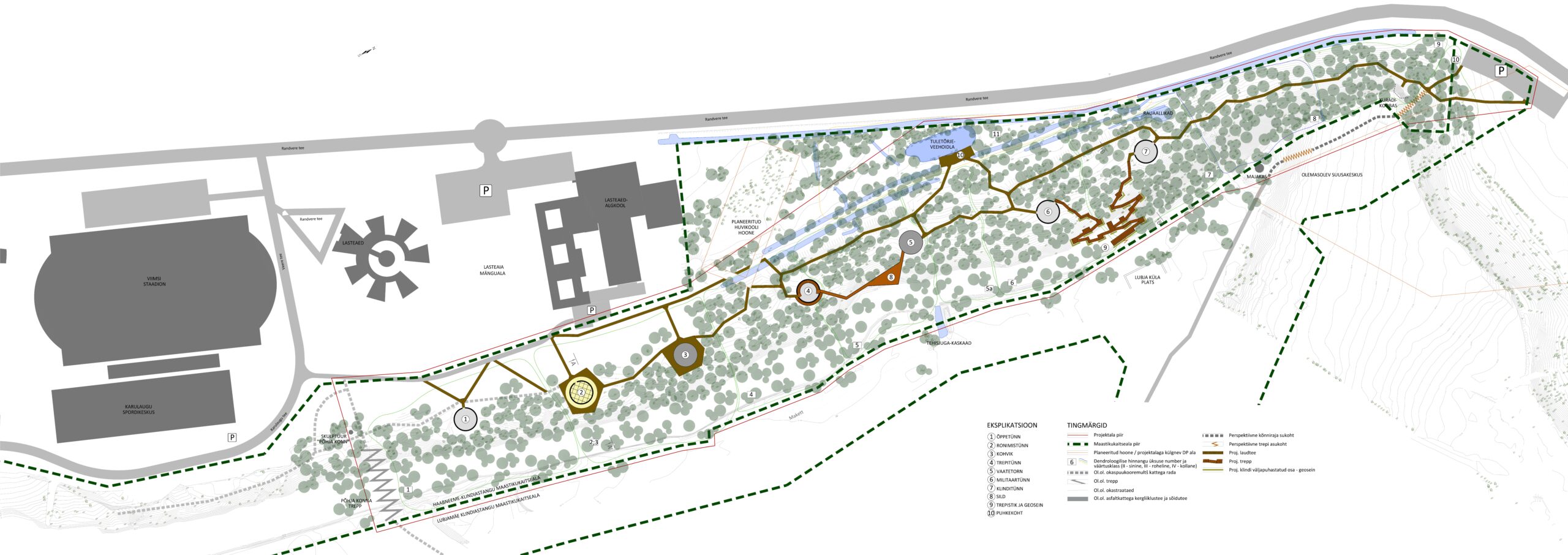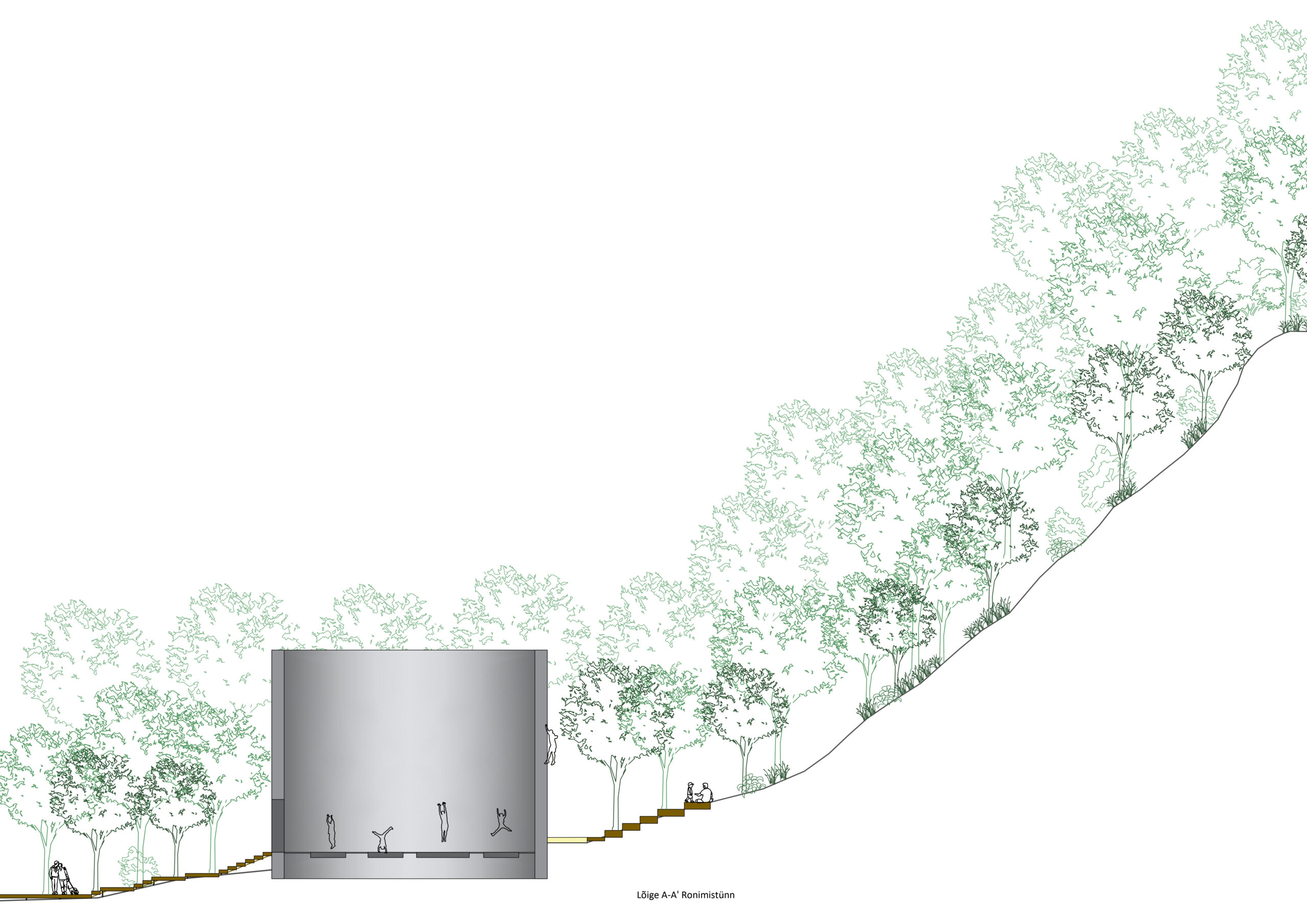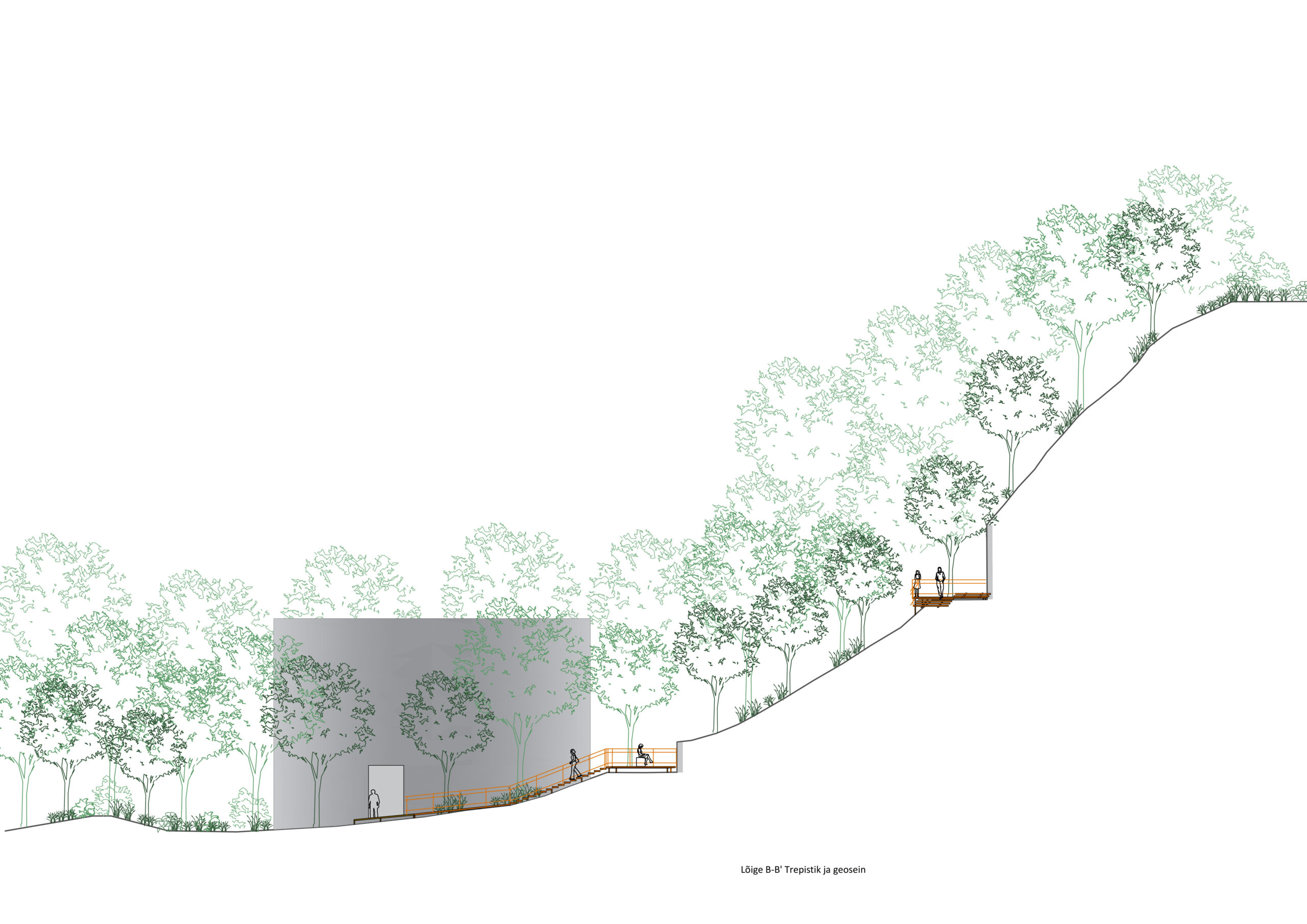Clint as a value of the landscape, project of Haabneeme escarpment area
Address Haabneeme escarpment area, Viimsi parish, Harju county, Estonia
Year 2019
Suvervisors Kersti Lootus and Tiina Tuulik
The aim of the bachelor’s thesis is to study North Estonian klint from different perspectives, including the klint as a part of a bigger system of The Baltic klint, the formation theories of this land form, it’s historical, cultural and natural qualities, historical land use traditions. All these aspects give a better overview of the escarpment landscapes.
Values. The Baltic klint is approximately 1200 km long escarpment system and it is located between the Öland Island (in Sweden) and Lake Ladoga (in Russia). The North Estonian klint is the most spectacular landscape element in Estonia, the length of this unique formation is about 300 km. Moreover, it is the most conspicuous part of Baltic klint because of the steep escarpment revealing the Earth’s history millions of years ago. However, this landform is inaccessible due to its location, it’s facing the Baltic Sea and the steep escarpment is not visible from the land. As a result of inaccessibility, the klint and the escarpment landscape has developed without human intervention. Therefore, these landscapes have very diverse value, for example various landscape types (klint forest, alvars), geological diversity (Ordovician limestones and Cambrian sandstones and clays), different habitats. In fact, many sectors of the klint coast area are protected areas.
Recreational needs. Haabneeme village is located next to the Viimsi klint island and the project area is the most densely populated area in Viimsi parish and the population of Viimsi parish has been growing in the past decade and still shows increasing growth. Next to the foot of the escarpment there are located many schools and kindergartens, in spite of that there are many children and youth who has to go to kindergarten or school elsewhere other than their home village. Therefore, there is a great pressure for the landscape conservation areas to use the land for building new residential areas and new schools and making the landscape conservation area more accessible for recreational needs.
The spatial solution suggests for the project area Haabneeme escarpment many functions. First, providing the accessibility to the area by minimizing the adverse effect of soil compaction and destruction of the vegetation. Therefore, the paths of the area are raised above the ground. Connecting different parts of the village through the landscape conservation areas makes a better living environment as the distances become suitable for walking. Sets of stairs with the cleaned geological walls, a café and a viewing tower are suggested for introducing the area. Former fuel tanks are given new functions supporting outdoor education of natural and environmental sciences, introducing the Haabneeme and Lubjamäe landscape protection areas along side with Viimsi parish’s other protections areas. It is also important to introduce the military history of the specific site together with Viimsi parish’s military history. For scientific and educational reasons, the spatial solution suggests a set of stairs along with the cleaning the side of the escarpment to reveal the geological treasures and make them accessible for locals, tourists and scientists.


